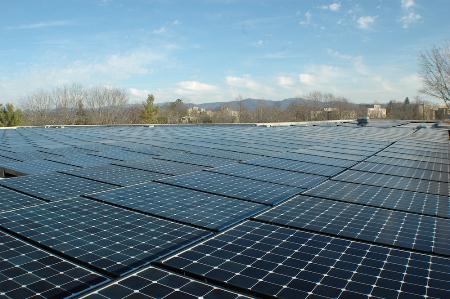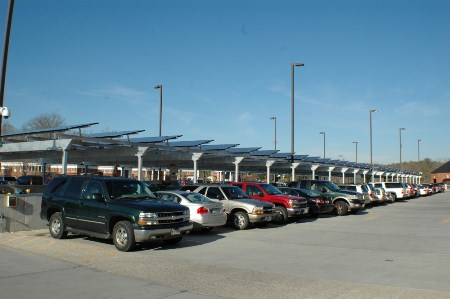Since last summer, when Gov. Robert McDonnell signed into law a number of bills supporting solar energy development in Virginia, some exciting things have been happening on the solar energy front in the state. Late last year, Dominion Virginia Power announced its intention to launch a community solar initiative. And, this year, Washington and Lee University in Lexington commissioned the state’s largest photovoltaic (PV) system.
The 444-kilowatt Washington and Lee system consists of two arrays—one rooftop array of 1,016 SunPower modules on the roof of the Law School, and a custom-designed steel canopy featuring 540 Sanyo modules over the university’s parking deck. The PV systems will help the university achieve its goal of reducing its greenhouse gas emissions by 20 percent over the next five years, and reduce its electricity bill by about 3 percent.

Leveraging tax-based incentives for renewable energy projects can requires some creating financing tools when it comes to developing projects for tax-exempt entities like universities. This project was made possible by a collaboration between Washington and Lee, Staunton-based solar energy developer Secure Futures, and two contractors: Morrisville, N.C.-based Southern Energy Management and Maryland-based Standard Solar. The university is leasing the system from Secure Futures under a 20-year leasing agreement with its subsidiary, Lexington Solar.
According to Steve McAllister, vice president for finance and treasurer at Washington and Lee, this arrangement enabled the project to leverage federal and state tax incentives, and reduced the up-front cost of the system. The project also benefited from the city of Lexington’s 20-year tax exemption for solar energy equipment, and a grant awarded by the Virginia Department of Mines, Minerals and Energy, using funds from the 2009 merican Recovery and Reinvestment Act.
“Not only does this project make environmental sense, but the federal and state incentives that Secure Futures was able to obtain also made it an economically viable project for the university,” McAllister said.

Data from the system can be accessed in real time through a Web-based dashboard, which displays graphs showing the power production, ambient and cell temperatures, and the environmental benefits of both arrays.
“The dashboard is another important component of the project,” said Beebe. “Having this as part of our overall energy dashboard will allow anyone from on or off campus to see how much energy is being produced and consumed. It will not only help technicians and be a boon for anyone doing research on these projects, but it’s also another important way of showing our commitment to sustainability.”